By Tom Wintaugh | September 25, 2023

See why top ecommerce brands use Miva’s no-code platform to run
multiple stores, manage massive catalogs, and grow their revenue.
Customer acquisition costs have risen swiftly, with a 60% jump in average CAC in just over the past five years. There are many factors which contribute to this which are completely out of merchant control, such as:
For merchants, the challenge becomes finding ways to off-set these cost hikes, without sacrificing steady growth of audience and revenue. In this blog, we'll offer simple yet powerful ways you can earn more business without doubling your ad spend.
The best way for merchants to combat external rising costs is by focusing on areas they can control, such as the ecommerce website. Why? Because acquiring a new customer can be five to seven times more expensive than retaining a current one. By implementing best practices for optimization, merchants can increase revenue coming from the existing customer audience and site traffic, versus having to find all-new shoppers who must be attracted via expensive digital advertising. Improving the results from your current audience hinges on these three master goals:
Unlike broader macro-economic costs and changes, all of these metrics can be improved with thoughtful website design and modern selling techniques. The more customizable an ecommerce platform is, the more it can be fine-tuned to draw the maximum possible revenue from existing site visitors.
The best way to maintain and develop an existing customer/traffic base is to orient your entire website to making their experience as fast, relevant, and engaging as possible. This is what is really meant by "site optimization"—how can the online shopping experience be calibrated to make the customer's journey to a purchase as easy, intuitive, and satisfying as possible? Here's where to start:
1. Personalization of the site experience
Tailor your website to offer a personalized experience to every visitor, utilizing data analytics to suggest products, offer personalized deals, and create a user-friendly interface that connects with buyer preferences and history. Even if you don’t have access to specific data on a site visitor (via account log-in), the website might offer various ways for visitors to self-select the experience and products they are looking for.
2. Classic CRO techniques
Tried-and-true Conversion Rate Optimization techniques such as A/B testing, offering price quotes, and creating clear calls-to-action that guide visitors smoothly through the conversion funnel are widely used for a reason. Explore “15 Conversion Optimization Techniques for Selling More Online” at this link.
3. Better data integration
Enhance your website's efficiency and user experience by integrating data seamlessly across all platforms. Data which tracks customer behavior, preferences, and purchases, incorporating reports from external partners, allows for a more streamlined and informed buying experience for your customers.
4. More accessible customer service
Ensure that help is readily available through various channels such as self-service knowledge guides, FAQs, live chat, email, or phone support. A well-trained customer service team can address concerns promptly, fostering trust and encouraging users to complete their transactions. Assess the health of your customer service program here.
5. Staying responsive to feedback from customers and the market
Actively seek and respond to feedback from customers and the broader market in order to continuously improve your website, adapt to changing preferences and needs, and enhance the overall customer satisfaction. We prepared a guide to ma
Miva has produced several guides to website optimization which offer practical tips for assessing site performance, managing customer experience, and driving more revenue.
When CAC costs are rising, save money by optimizing your website to capitalize on your existing traffic and customer base. The online shopping experience is a merchant’s most powerful tool to build and retain that business, and the one over which they have the greatest control when external conditions are in flux.

Katy Ellquist, Miva’s Digital Marketing Strategist, is an accomplished writer, marketer, and social media analyst who has created sophisticated content campaigns for a broad range of professional clients. She brings to Miva a complex understanding of ecommerce trends and techniques, building upon extensive digital agency experience and a prior role as direct liaison to Miva’s top accounts. Katy is a regular contributor to the Miva blog, covering essential ecommerce topics like design & development strategy, site optimization, and omnichannel selling, with the goal of increasing the actionable knowledgebase of the entire Miva community.
Love it? Share it!
No worries, download the PDF version now and enjoy your reading later...
Download PDF